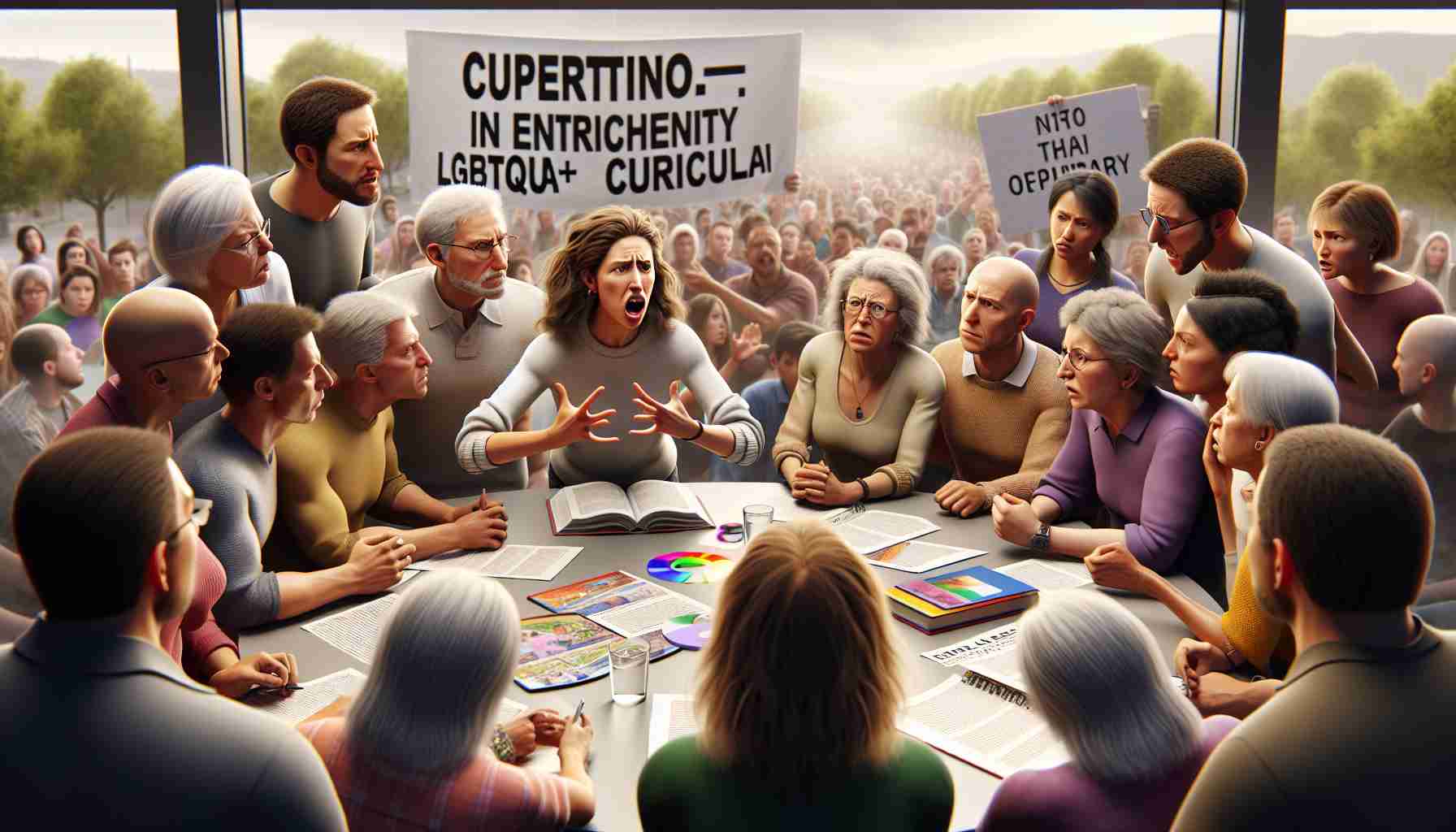In an ongoing debate at the Cupertino Union School District, educators and parents are expressing strong opinions regarding LGBTQ+ inclusion in the classroom. During a recent board meeting, a significant number of supporters for LGBTQ+ safety rallied with signs advocating for protection for both students and teachers. Conversely, a smaller contingent voiced their concerns about discussions of advanced gender topics being appropriate for young children.
This conflict was ignited by the leave of a transitional kindergarten teacher, who identifies as nonbinary and was suspended after displaying a classroom poster featuring diverse pronouns alongside children’s literature depicting boys in skirts. This action raised questions about the scope of the district-approved teaching materials.
While the teacher awaits the outcome of an internal investigation, tensions are rising between those advocating for comprehensive LGBTQ+ education and groups calling for stricter curriculum guidelines. Supporters of the teacher insist that inclusivity is vital for fostering a safe learning environment. They argue that the ability to express gender identity should be accepted from a young age.
Conversely, some parents and community members worry that introducing such topics might be premature for preschool-aged children. They argue that classroom discussions should focus strictly on age-appropriate content. In light of this, the district is set to review its policies regarding controversial subjects in education.
As these discussions unfold, the implications extend beyond just one school, potentially influencing broader policy approaches towards LGBTQ+ matters across various districts.
Understanding LGBTQ+ Inclusion in Schools: Tips, Life Hacks, and Interesting Facts
In recent discussions surrounding the inclusion of LGBTQ+ topics in schools, many different opinions and emotions come to the forefront. As educational institutions navigate these complex subjects, it’s crucial for parents, educators, and students to be informed. Below are some tips, life hacks, and interesting facts to foster a better understanding of LGBTQ+ inclusion in the classroom.
1. Educate Yourself and Others
Understanding LGBTQ+ issues is the first step toward fostering a welcoming environment in educational settings. Read books and articles that discuss gender identity and sexual orientation openly. Consider resources from reputable organizations like GLAAD or the Human Rights Campaign, which provide educational materials for all ages.
2. Encourage Open Dialogue
Creating an atmosphere where children feel safe discussing their thoughts and questions about gender identity can lead to better understanding. Set aside time for open discussions at home or in class about various identities and expressions. This helps normalize conversations around LGBTQ+ topics.
3. Use Age-Appropriate Materials
Selecting the right teaching materials is key to introducing these conversations. Look for children’s literature that features diverse characters and stories that reflect a variety of gender identities. This not only validates the experiences of LGBTQ+ children but also educates their peers.
4. Advocate for Inclusivity
Become an advocate for inclusive policies in your local school district by attending board meetings or joining parent-teacher associations. Share your views respectfully and passionately to promote the importance of LGBTQ+ inclusivity in school curriculums.
5. Create a Supportive Environment
As a teacher or parent, you can create an environment that supports all identities. Celebrate diversity through events like Pride Month, and emphasize the importance of kindness and respect for everyone regardless of their gender identity or expression.
Interesting Fact:
Research shows that when schools implement LGBTQ+ inclusive curriculums, students experience lower rates of bullying and increased feelings of safety. This transformation leads to improved academic performance and emotional well-being.
Life Hack:
Incorporate discussions about LGBTQ+ figures in history into your lesson plans. Teaching about notable individuals from diverse backgrounds can highlight the contributions of LGBTQ+ people while making the subject matter relatable to students.
In conclusion, the topic of LGBTQ+ inclusion in education is multifaceted and deeply important. By being informed, advocating for inclusivity, and creating supportive environments, we can contribute positively to the ongoing conversation about equality in education. For further insights and resources about LGBTQ+ education, visit Human Rights Campaign or GLAAD.
